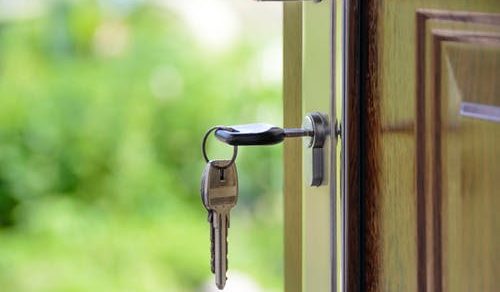Where to Check for Mold After a Leak in Your Home?
Mold is a sneaky guest that can show up in your home uninvited, especially after any leak or water incident. While you might not always see it initially, mold can be hiding just beneath the surface, waiting for the perfect conditions to make itself known. It’s not a party you want to have, considering the potential health risks and damage to your home. So, let’s walk you through the areas you should check for mold after you’ve leaked.
Mold and Its Favorite Hiding Spots
Mold loves moisture, warmth, and dark spaces. After a leak, even if you’ve cleaned up the visible water, it can seep into nooks and crannies you wouldn’t think to check. Mold can begin to grow within 24-48 hours under the right conditions. So, if you’ve leaked, here are the prime locations you should investigate:
1. Walls and Ceilings
-
Behind Drywall: Water can seep through walls, making the space between your drywall and insulation a hot spot for growth.
-
Ceilings: Look for discoloration or warping that could indicate trapped moisture.
-
Baseboards: These can hide mold behind them since they create a seal against the wall, trapping moisture.
2. Floors and Carpet
-
Laminate or Wood Flooring: Swelling or warping could mean water has gotten underneath.
-
Carpet: The padding underneath carpets is like a sponge for water. Sniff for a musty odor or look for any signs of dampness or staining.
3. Bathrooms and Kitchens
These rooms are mold’s favorite due to the frequent presence of water. Examine:
-
Under Sinks: Check for leaks and moisture around pipes and under the sink cabinet.
-
Around Appliances: Keep an eye on the spaces around your dishwasher, fridge, and washing machine.
-
Tile Grout and Caulking: These areas can trap moisture and are common places for mold to appear.
4. Attics and Crawl Spaces
-
Attics: Poor ventilation in attics can lead to moisture accumulation, creating an environment conducive to mold growth. Inspect for signs of water intrusion, especially after heavy rainfall.
-
Crawl Spaces: Dark and often neglected crawl spaces are ideal hiding spots for mold. Check for dampness, water leaks, and adequate ventilation to prevent mold colonization.
5. HVAC Systems
-
Air Ducts: Mold can thrive in the dark and damp interiors of air ducts. Regular inspection and cleaning of HVAC systems are essential to prevent mold spores from circulating throughout the home.
Now, when you do find mold, it’s time for mold removal. If you’re in the area, you might want to reach out for Sugar Land mold remediation to ensure the job is done thoroughly and safely. A professional team will have the right equipment and expertise to remove mold and suggest ways to prevent it in the future.
Why Quick Action Is Crucial
In the realm of water damage, time is of the essence, and swift action can make a significant difference in mitigating potential consequences. It’s not merely about addressing the immediate issue, such as fixing a leak; rather, it encompasses preventing long-term ramifications, notably mold growth and structural damage. Here’s why quick action is crucial:
1. Mold Prevention
Mold can begin its stealthy growth within 24-48 hours under favorable conditions. Swiftly addressing water damage helps thwart the onset of mold, preserve indoor air quality, and prevent potential health hazards.
2. Structural Integrity
Prolonged exposure to water can compromise the structural integrity of building materials. Quick action aids in minimizing damage and preserving the strength and stability of the affected structures.
3. Cost-Efficiency
Timely intervention reduces the extent of damage, subsequently minimizing repair and restoration costs. Proactive measures save both time and money in the long run.
4. Professional Expertise
If the damage is extensive or complex, seeking professional assistance is advisable. Water damage restoration experts possess the skills, knowledge, and equipment to handle intricate situations effectively.
Speaking of professionals, if you’re dealing with property damage restoration, you can turn to experts like PuroClean Restoration in Sugar Land. Their team understands the urgency of these situations and can help nip mold in the bud before it wreaks havoc on your home.
5. Comprehensive Assessment
Rapid action allows for a thorough assessment of the situation, identifying not only the visible damage but also potential hidden issues. This comprehensive evaluation ensures that all aspects of the damage are addressed.
Preventive Measures to Keep Your Home Mold-Free
You’ve checked your home; maybe you’ve found some mold and had it professionally removed. Now, you want to make sure it doesn’t come back. Here are some preventive measures you should keep in mind to maintain a mold-free home:
1. Proper Ventilation
-
Use dehumidifiers to keep indoor humidity levels between 30-50%
-
Always use exhaust fans in bathrooms and kitchens
-
Keep air vents unblocked to promote air circulation
2. Routine Maintenance
-
Regularly inspect plumbing for leaks and fix them promptly
-
Ensure your home’s exterior, including the roof and gutters, is well-maintained to prevent water intrusion
-
Check and maintain window seals to prevent condensation and water seepage
3. Mold-Resistant Products
When repairing or renovating, consider using mold-resistant drywall, paints, and other building materials, especially in rooms prone to moisture.
Final Thoughts
Checking for and addressing mold after a leak is about being proactive and knowing where to look. Remember, mold can hide well, but understanding its favorite spots and the conditions in which it thrives can help you spot and stop it quickly. It’s not something you should have to deal with regularly, so by following these tips, you can keep your home healthy and mold at bay. Don’t hesitate to turn to professionals for help. Their expertise in property damage restoration means your home will be in capable hands, and they’ll help restore your peace of mind.


